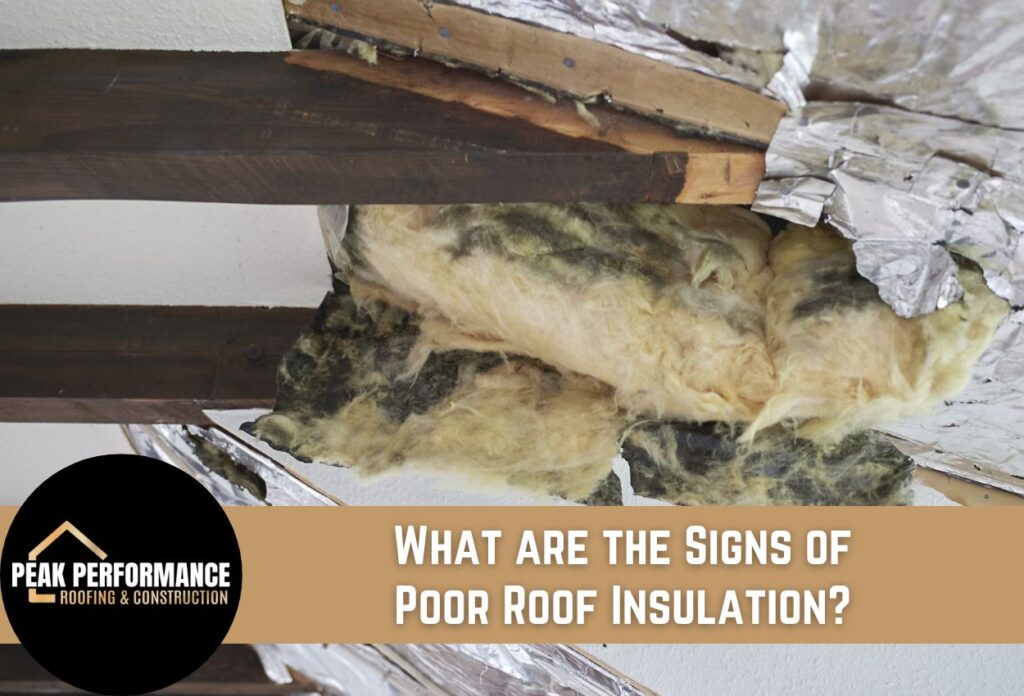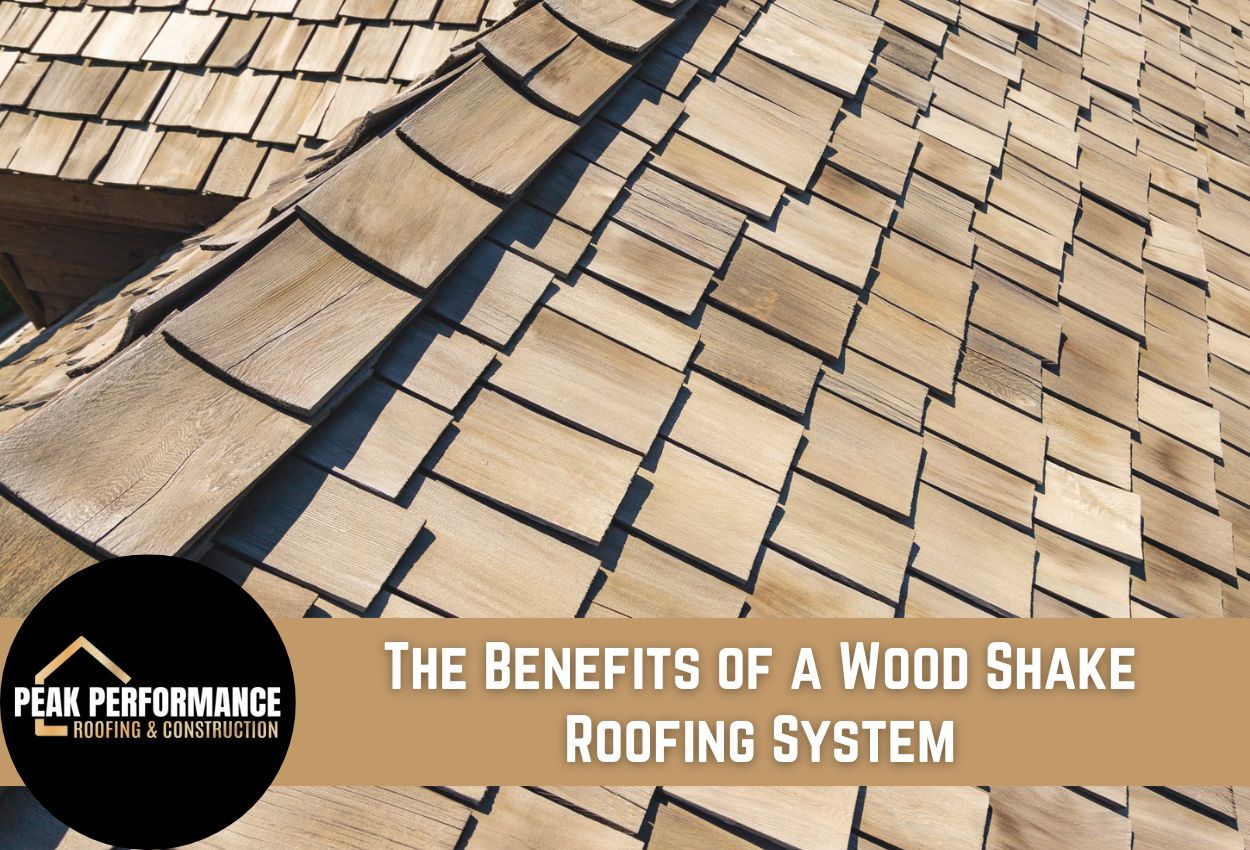
For a comfortable and energy-efficient home, sufficient roof insulation is non-negotiable. When insulation fails or becomes inadequate, certain telltale signs may emerge that should never be ignored. From unexpected energy bill increases to visible moisture damage, these warning signals indicate that your roof’s thermal barrier is no longer performing as it should. For Tulsa homeowners, where temperatures can swing dramatically between seasons, effective insulation is even more essential.
Understanding the signs of poor roof insulation allows homeowners to address issues before they turn into costly repairs. Cold spots on ceilings, ice dams during winter, and attic temperature fluctuations all point to insulation problems that require professional attention. These symptoms not only affect your home’s comfort but can also lead to structural damage if not addressed.
Acting quickly when these indicators appear can save on energy costs and prevent secondary issues like mold growth from moisture accumulation. Professional roofers can evaluate the condition of your insulation and recommend appropriate solutions tailored to your specific situation. Recognizing these warning signs is the first step toward restoring your home’s efficiency and protecting your investment for years to come.
Sign #1: Skyrocketing Energy Bills Despite Normal Usage
One of the most revealing signs of poor roof insulation is unexpectedly high energy bills when your usage patterns haven’t changed. When roof insulation deteriorates or becomes inadequate, your heating and cooling systems must work overtime to maintain comfortable indoor temperatures. This increased strain on HVAC systems directly translates to higher utility costs month after month.
In Tulsa, where we experience both scorching summers and chilly winters, insulation problems create distinct seasonal patterns in energy consumption. During summer months, poorly insulated roofs allow heat to penetrate your living spaces, forcing air conditioners to run continuously. Winter brings the opposite problem. Precious heated air escapes through the roof, causing furnaces to cycle more frequently to compensate for the constant heat loss.
Professional roofers may ask you for specific bill patterns that indicate insulation issues rather than other efficiency problems. When energy costs spike dramatically during extreme temperature seasons while remaining normal during mild weather, roof insulation is typically the culprit. Many Tulsa homeowners discover their insulation problems after noticing their cooling costs have doubled despite using the same thermostat settings as previous years. This connection between consistent usage but inconsistent bills provides clear evidence that your roof’s thermal barrier requires professional evaluation.
Sign #2: Inconsistent Indoor Temperatures Throughout Your Home
If you find yourself reaching for a sweater in one room while feeling perfectly comfortable in another, poor roof insulation could be the cause. Inadequate roof insulation creates noticeable temperature variations throughout your home that can both impact comfort and livability. These temperature differences are especially pronounced in rooms directly beneath the roof or on upper floors where the insulation’s effectiveness has the greatest impact.
A simple way to identify these problem areas is to conduct your own temperature test. On a particularly hot or cold day, walk through each room of your home and note any distinct temperature changes. Pay special attention to upstairs rooms and spaces with ceiling access to the attic. You can also use an inexpensive infrared thermometer to scan ceilings and walls, looking for cold spots in winter or unusually warm areas in summer that indicate heat transfer through poorly insulated sections.
Tulsa homeowners often notice these temperature inconsistencies most dramatically during seasonal transitions. When some rooms remain stubbornly cold despite the heating system running continuously, this suggests heat is escaping through inadequate roof insulation. These temperature variations not only create comfort issues but force your HVAC system to work harder, contributing to those higher energy bills. Professional roofing contractors can perform comprehensive insulation assessments to identify exactly where your home’s thermal envelope is failing.
Sign #3: Ice Dam Formation And Winter Roof Issues
Ice dams are one of the most visible and destructive indicators of poor roof insulation, especially during Tulsa’s winter months. These problematic ice formations occur when heat escapes through an inadequately insulated roof, causing snow to melt and then refreeze at the roof’s edge. The mechanics are straightforward: warm air from your living space rises through insufficient insulation, warming the roof surface. Snow melts on the warmed sections but refreezes when it reaches the colder roof edge, creating a barrier that prevents proper drainage.
Visual signs of ice dam formation include icicles hanging from gutters, ice buildup along roof edges, and water staining on interior ceilings and walls. When you notice these signs, you’re not just seeing winter weather effects, you’re witnessing clear evidence that heat is escaping through your roof. This heat loss indicates your insulation is failing to provide the thermal barrier your home needs.
Ice dams can cause more than just water intrusion. Over time, these ice formations can lift shingles, tear gutters away from the roofline, and force water underneath roofing materials. For Tulsa homeowners, addressing the root cause, usually poor insulation, is more effective than repeatedly repairing the resulting damage. Professional roofing contractors can identify insulation gaps that contribute to ice dam formation and recommend solutions that protect your roof throughout the winter.
Sign #4: Deteriorating Attic Condition
Your attic is where insulation problems often originate, revealing clear warning signs before they affect your entire home. During inspections, pay close attention to insulation distribution patterns, as uneven coverage with visible gaps or bare spots indicates serious efficiency issues. Properly installed insulation should have a consistent depth across the entire attic floor without significant variations or compressed areas that reduce its effectiveness.
Discoloration offers another important visual clue. Insulation that appears darkened, stained, or shows water marks suggests moisture infiltration, a problem that not only reduces thermal efficiency but can lead to mold growth and structural damage. In Tulsa, where humidity fluctuates seasonally, these moisture indicators need immediate professional assessment.
Temperature and humidity changes throughout the year provide additional confirmation of insulation problems. An attic that becomes excessively hot during summer months or unusually cold during winter indicates poor thermal barrier performance. Many Tulsa homeowners mistakenly attribute these temperature fluctuations to roofing material failures when inadequate insulation is often the actual culprit. Professional roofers use tools to measure these variations and distinguish between insulation deficiencies and other roofing concerns, helping homeowners address the source of their energy efficiency problems.
Sign #5: Moisture And Mold Development In Upper Floors and Attic
Poor roof insulation creates the perfect conditions for moisture accumulation in attics and upper walls of your home. When warm, humid air from your living spaces rises and meets inadequately insulated roof surfaces, condensation forms rapidly. This moisture cycle occurs during Tulsa’s fluctuating seasonal temperatures, where the difference between indoor and outdoor conditions can be substantial.
Early warning signs of moisture problems include subtle water stains on drywall, slight discoloration along upper walls, and a persistent musty odor in upper living areas. You may notice slight warping of attic wood components or dampness in insulation materials long before serious structural damage develops. These indicators often appear seasonally at first, then become more noticeable during humidity spikes, and progressively worsen as insulation performance continues to deteriorate.
The relationship between insulation and mold development is direct and concerning. Moist environments created by poor thermal barriers provide ideal conditions for mold colonies to establish in hard-to-reach upper home areas. When inspecting for insulation problems, check dark corners of the attic, areas around vent pipes, and the underside of roof decking for black, green, or white spots. Addressing insulation deficiencies as soon as possible can prevent these moisture issues from developing into costly remediation projects requiring extensive professional intervention.
Sign #6: External Roof Warning Signs
Your roof can communicate insulation problems through visible exterior signs that you can spot without climbing a ladder. One of the most telling indicators during winter is uneven snow or ice melting patterns. When you notice patches of roof where snow has melted while surrounding areas remain covered, this shows where heat is escaping through inadequate insulation. These warm spots on your roof indicate energy dollars literally vanishing through your roofing system.
Shingle deterioration also reveals underlying insulation issues. Poor insulation traps heat beneath roofing materials, accelerating the aging process of shingles. Look for premature lifting, cracking, or blistering of shingles, particularly if these problems appear in specific sections rather than uniformly across the roof. These localized damage patterns typically correlate with the most problematic insulation areas below.
Roof color inconsistencies provide another visible clue from ground level. Sections of your roof that appear darker or differently colored than surrounding areas often indicate moisture retention or heat differences caused by insulation gaps. While some color variation is normal with aging, patterns that follow structural lines of your attic often point to insulation problems rather than normal weathering. Many Tulsa homes develop these telling patterns after just a few seasons of extreme temperature fluctuations, signaling the need for professional insulation inspection.
Quick Assessment Methods And Next Steps For Tulsa Homeowners
Before calling in the professionals, Tulsa homeowners can perform several simple assessments to confirm insulation problems. Start with a visual inspection of your attic during different weather conditions. On hot days, your attic should be cooler than the outdoor temperature if insulation is functioning properly. Similarly, during cold weather, properly insulated attics should maintain temperatures close to the outdoor ambient temperature rather than feeling warm from heat escaping your living space.
A flashlight test can reveal obvious gaps in insulation coverage. Shine the light parallel to the attic floor to spot inconsistent insulation heights or missing sections. You can also use a wooden ruler to measure insulation depth in various locations, comparing against the recommended R-values for Oklahoma’s climate zone (R-30 to R-60 for attics). Temperature variations between rooms can be documented using a digital thermometer to create a map of problem areas.
Once you’ve identified potential insulation issues, the next step is professional assessment. Tulsa roofing contractors can perform comprehensive evaluations using specialized equipment like infrared cameras that reveal hidden heat loss. Remediation approaches typically include adding blown-in insulation to achieve proper R-values, sealing air leaks around penetrations, and improving attic ventilation to prevent moisture buildup. Addressing any insulation issues can significantly reduce energy costs and extend the life of your roofing system.
Resolve Your Roof Insulation Issues with Peak Performance Roofing & Construction
If you’ve noticed any of the signs discussed above, such as inconsistent indoor temperatures, ice dams, or visible moisture and mold in your attic, it’s time to take action. Poor roof insulation not only compromises the comfort of your home but also leads to higher energy bills and potential structural damage.
Don’t let insulation problems escalate. Contact Peak Performance Roofing & Construction today at (918) 694-1483. Our experts specialize in identifying and resolving roof insulation issues so your home remains warm, energy-efficient, and protected against the elements. Call us today to secure a professional assessment and enjoy a safer, more comfortable home.



